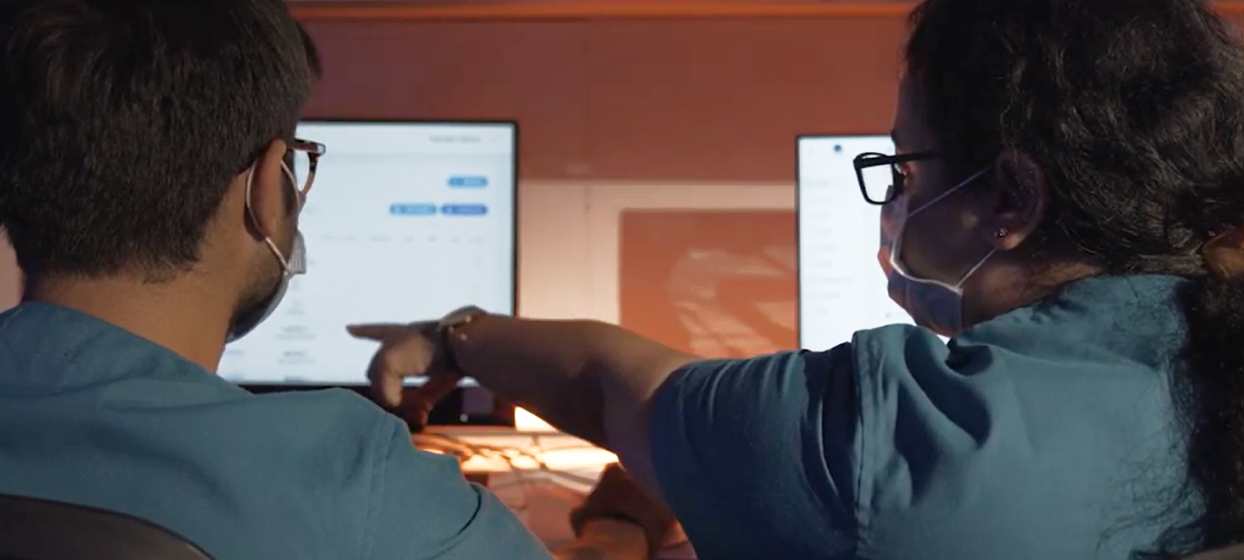Historically, nurses have been viewed as benevolent caretakers, soldiering alongside doctors in wars and on the frontlines of emergencies. Once among society’s most revered and achieving almost halo-like stature (Miss Nightingale at Scutari, 1854, anyone?), the exemplary idea of a nurse has altered over time as the profession has gone through a renaissance, affected by newer demands and modern challenges. The present-day nurse might not be entirely different from their precursors in their selflessness, burning the midnight oil—or, its more contemporary version—to look after those under their care.  Florence Nightingale at Scurati, 1854
Florence Nightingale at Scurati, 1854
But despite eons of progress and modernisation, and what your intuition might tell you, nurses today are exhausted and overworked.
The current situation can be attributed to several things, some tangible and others nuanced. To paint a crude picture, envision a nursing home or hospital in a remote part of the country—take your pick. Perhaps on the outskirts of a tiny town or even a few hundred kilometres away from a bustling metropolis. Consider the fact that these places are usually understaffed and short of infrastructure. And imagine the influx of patients as a result of no secondary options in the vicinity. Now, consider the life of a nurse in such a centre—and it becomes evident just how difficult it can get.
So, what exactly is the situation?
Some numbers immediately stand out:
⬤ With just under two nurses for every 1000 people, India is slightly away from meeting the WHO’s mandate of three nurses for the same population sample.
⬤ It is estimated that our country needs over 4 million more nurses in the coming year to address the shortage. That’s roughly the entire population of Croatia. Or Kuwait.
⬤ India ranks 66th in the Global Health Security Index 2021, a measure of a country’s readiness in the face of epidemics and pandemics.
And lest we forget, there’s the issue of nurses moving abroad in search of the proverbial greener pasture. Over 6 lakh nurses are working outside the country, from everywhere from the USA to Bahrain, filing shortages in these regions while having access to comparatively better benefits. (Nurses in the United States earned around 80,000 USD PPP in 2020, while those in the United Kingdom earned nearly USD 50,000. India, of course, comes further down the list.) And while other countries are embattled in their own healthcare crises, closer home, we have the unique task of plugging multiple holes while juggling an out-of-control population.
The Indian Nursing Council’s annual report sheds some more light on the ground realities of the sector. There’s a lot to get through, but for the purpose of brevity, we’ll stick to the essentials:
While institutions devoted to auxiliary nurse and midwife (ANM), general nursing and midwifery (GNM), and other nursing programmes have exponentially risen year on year since the start of the millennium, they’ve gradually come to a grinding halt in recent years.
But simply boosting these numbers won’t suffice—they’ll merely mask other not-so-obvious aspects dragging nursing education back, including a shortage of qualified faculty and inadequate funding to more complex issues like bureaucratic red tape, outdated curriculums, poor testing of potential candidates, and a lack of standardisation. Additionally, research and further education are not deemed desirable enough in nursing circles, with the burst of opportunities overseas providing a more tempting immediate prospect.
While nursing schools and colleges hasten to rectify their problems and try to ensure up-and-coming professionals are well trained and ready to enter the job market, their experienced peers have a few issues of their own. Industry insiders will speak of challenges within the system, like the high level of training required, staffing issues due to dynamic workloads, poor technological knowledge, and a high attrition rate among nursing staff, and nurses’ workflows are often complex and time consuming.
Nurses can find themselves repeatedly walking between stations and patient beds and are prone to cognitive overload from exposure to multiple beeping devices and alarms. Rounding it all off is the possible increased risk of infection and room for nurse-patient conflicts— yes, that’s a real thing!
To most people’s surprise, one area nurses find exceptionally tough is patient monitoring. Yes, the good old ‘checking in and noting a bunch of readings’ bit. Manually identifying deterioration in patients can be difficult, with monitoring occupying a bulk of a nurse’s day-to-day activities.
But thankfully, there are solutions in sight.

Connected health devices and contactless remote patient monitoring systems are transforming healthcare by allowing nonintrusive access to track patient activities and monitor their vitals. Heart rate, blood pressure, respiration, temperature, ECG, and more—all delivered remotely and in real time! These seemingly sci-fi-come-to-life technologies help medical professionals intervene in time with their early warning systems (EWS), quickly alerting nurses to any emergency.
Dozee—for example—an Al-based contactless continuous Remote Patient Monitoring and Early Warning System can help nurses simplify their workflows by keeping tabs on a person’s vitals. The remote patient monitoring device is intuitive and can track and analyse a patient’s parameters through continuous vitals monitoring, alerting caregivers/nurses to even the slightest abnormality.
Nurses don’t have to shuffle from bed to bed making notes and taking readings—that’s several hours saved over a day, and as far as the industry’s concerned, it’s gold dust.
Nursing grievances are multifaceted and far beyond the scope of a concise article like this. There are quite a few hurdles to vault over. Whatever your feelings on technology are, there’s no denying that it is helping nurses battle fatigue and stepping in to ensure the effects of staffing shortages aren’t too widespread and noticeable. With remote patient monitoring, we’ve figured out how to complement overworked nurses. The day we expand our capabilities to fully solve every other issue and guarantee nurses breathe a permanent sigh of relief isn’t far off.




